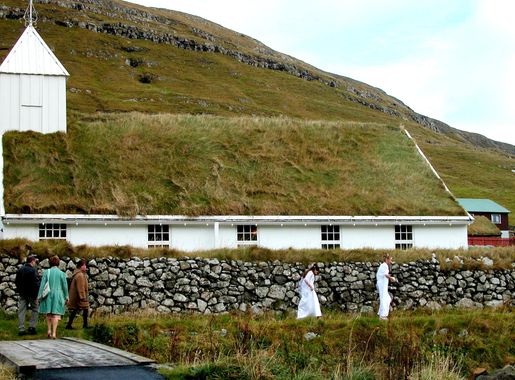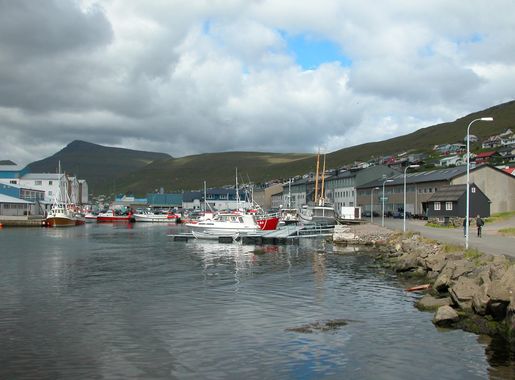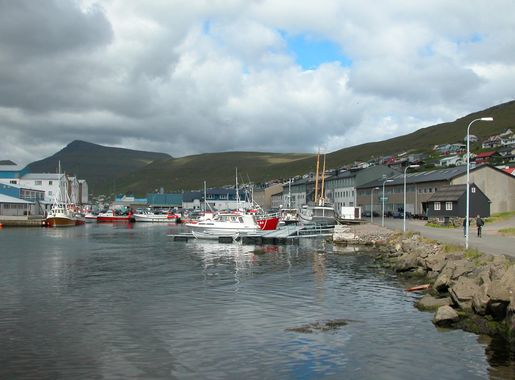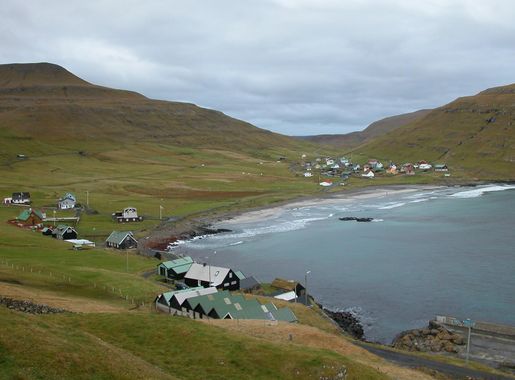
Húsavík: The Hidden Gem of the Faroe Islands
Discover Húsavík in the Faroe Islands, a tranquil village with stunning landscapes, rich culture, and exciting outdoor activities.
Húsavík is a quaint village nestled in the breathtaking landscapes of the Faroe Islands. Known for its untouched natural beauty, this destination offers a serene escape from the hustle and bustle of everyday life. Húsavík is surrounded by rolling hills, dramatic cliffs, and the endless expanse of the North Atlantic Ocean, making it a paradise for nature lovers. The village is small but rich in culture and history. It is home to traditional Faroese architecture, with colorful houses dotting the landscape. The local community is warm and welcoming, offering a chance to experience authentic Faroese hospitality. Visitors can explore the local church, which stands as a testament to the village's long-standing traditions. Húsavík is also a gateway to many outdoor activities. Hiking trails abound, allowing tourists to immerse themselves in the stunning scenery. Bird watching is another popular activity, with the area being home to numerous species of seabirds. For those interested in marine life, boat tours offer the opportunity to see whales and other sea creatures in their natural habitat. Whether you're seeking adventure or tranquility, Húsavík has something to offer everyone.
Local tips in Húsavík
- Bring warm clothing, as the weather can be unpredictable and chilly.
- Local currency is the Faroese króna; ensure you have some cash as not all places accept credit cards.
- Visit during the summer months for the best weather and extended daylight hours.
- Try local Faroese dishes in the village eateries for an authentic culinary experience.
- Book boat tours in advance, especially during peak tourist season, to secure a spot.
Húsavík: The Hidden Gem of the Faroe Islands
Húsavík is a quaint village nestled in the breathtaking landscapes of the Faroe Islands. Known for its untouched natural beauty, this destination offers a serene escape from the hustle and bustle of everyday life. Húsavík is surrounded by rolling hills, dramatic cliffs, and the endless expanse of the North Atlantic Ocean, making it a paradise for nature lovers. The village is small but rich in culture and history. It is home to traditional Faroese architecture, with colorful houses dotting the landscape. The local community is warm and welcoming, offering a chance to experience authentic Faroese hospitality. Visitors can explore the local church, which stands as a testament to the village's long-standing traditions. Húsavík is also a gateway to many outdoor activities. Hiking trails abound, allowing tourists to immerse themselves in the stunning scenery. Bird watching is another popular activity, with the area being home to numerous species of seabirds. For those interested in marine life, boat tours offer the opportunity to see whales and other sea creatures in their natural habitat. Whether you're seeking adventure or tranquility, Húsavík has something to offer everyone.
When is the best time to go to Húsavík?
Iconic landmarks you can’t miss
Kirkjubømúrurin
Explore the rich history of Kirkjubøur, the enchanting village with ancient ruins and breathtaking landscapes in the heart of the Faroe Islands.
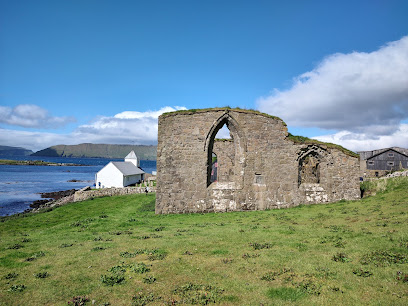
Gjógv Natural Harbour
Explore Gjógv Natural Harbour, a breathtaking destination in the Faroe Islands, where stunning landscapes meet rich history and vibrant culture.

The Nordic House
Discover The Nordic House in Tórshavn, a cultural center celebrating the art and heritage of the Faroe Islands amidst breathtaking Nordic architecture.

Fossá
Discover the breathtaking Fossá waterfall in the Faroe Islands, a stunning natural attraction that captures the essence of the archipelago's beauty.
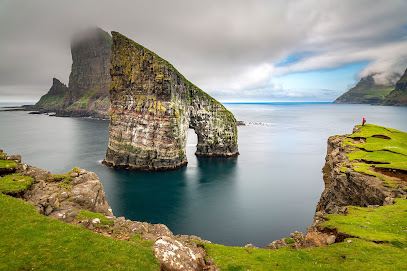
Skansin
Discover the history and beauty of Skansin, a captivating landmark in Tórshavn, offering stunning views and rich maritime heritage.

The Seal Woman (Kópakonan)
Discover the enchanting tale of The Seal Woman at this stunning sculpture in Mikladalur, an essential stop on your Faroe Islands adventure.
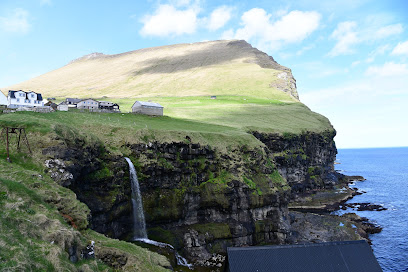
The National Gallery of The Faroe Islands
Explore The National Gallery of The Faroe Islands, a cultural treasure in Tórshavn showcasing vibrant art and creative expressions from the islands.

Tjóðsavnið (Faroe Islands National Museum)
Discover the captivating heritage and natural beauty of the Faroe Islands at Tjódasavnið, the National Museum where history meets breathtaking landscapes.
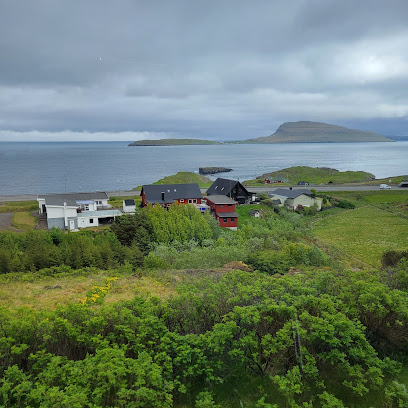
Kallur Lighthouse
Discover the mesmerizing Kallur Lighthouse in the Faroe Islands, a scenic gem offering breathtaking views and an unforgettable hiking experience.
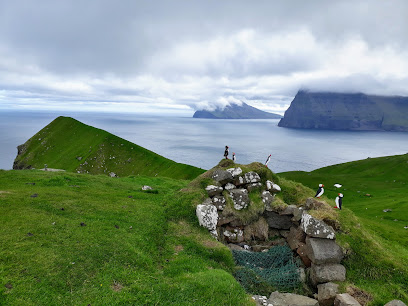
Dúvugarðar Museum & Café
Discover the heart of the Faroe Islands at Dúvugarðár Museum & Café—where culture meets cuisine in a scenic paradise.
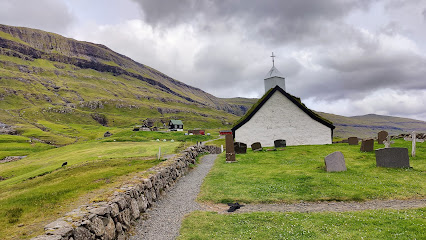
Slave Cliff (Lake Above the Ocean)
Experience the awe of Slave Cliff: a breathtaking hiking destination with stunning ocean views and rich wildlife in the heart of the Faroe Islands.
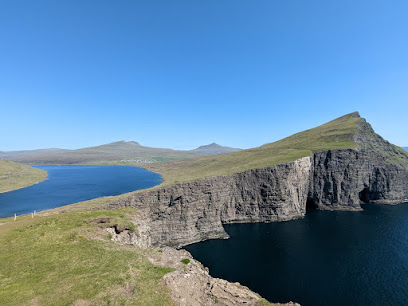
Klakkur
Explore the stunning landscapes and panoramic views of Klakkur, a natural wonder in the heart of the Faroe Islands.
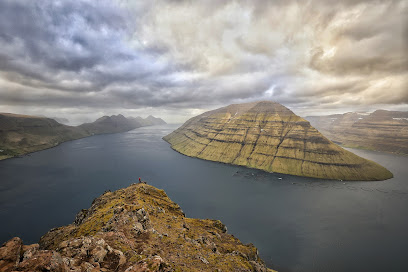
Witches Finger Trail
Explore the enchanting Witches Finger Trail in the Faroe Islands, a hiker's paradise filled with stunning views and rich folklore.

Vesturkirkjan
Discover the serene beauty and architectural elegance of Vesturkirkjan, a must-visit Lutheran church in Tórshavn, Faroe Islands.

Hvannhagi
Explore the breathtaking landscapes of Hvannhagi in the Faroe Islands; a must-visit natural beauty spot for every traveler seeking adventure and tranquility.

Unmissable attractions to see
Norðoya Fornminnissavn
Explore the rich history and culture of the Faroe Islands at Norðoya Fornminnissavn, a captivating museum in Klaksvík.
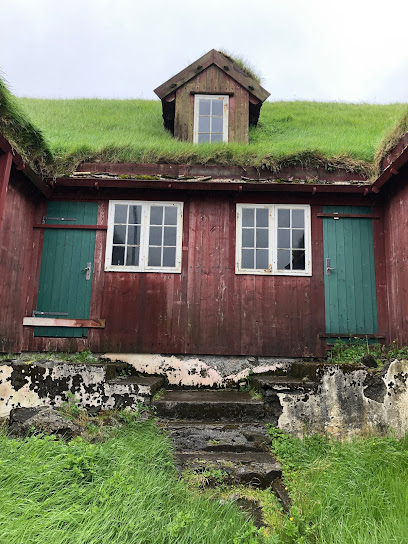
Ásmundarstakkur trailhead
Experience the breathtaking beauty of the Faroe Islands from the Ásmundarstakkur Trailhead, a must-visit hiking destination full of stunning landscapes.

Essential places to dine
Angus Steakhouse
Experience exceptional dining at Angus Steakhouse in Tórshavn, where high-quality steaks meet unparalleled Faroese hospitality.
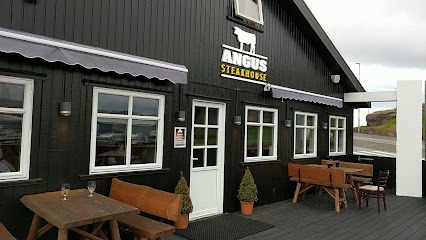
Áarstova
Experience authentic Faroese cuisine at Áarstova, where local flavors meet stunning views in Tórshavn.
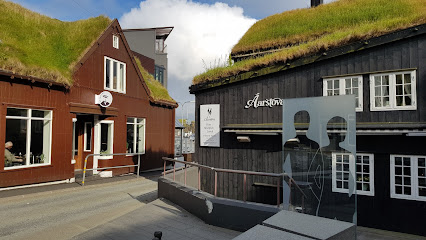
Barbara Fish House
Experience authentic Faroese seafood at Barbara Fish House in Tórshavn - where every dish tells a story of local traditions.

Rose's Restaurant & Catering
Discover exquisite Faroese cuisine at Rose's Restaurant & Catering in Ljósá—where local flavors meet breathtaking views.
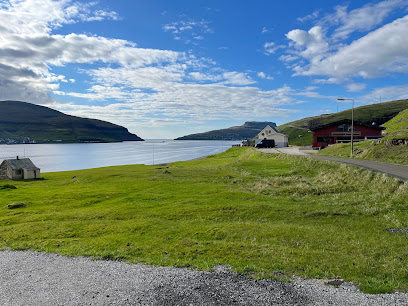
Fisk og Kips
Discover Fisk og Kips: A delightful fish & chips experience in Tórshavn, serving fresh local seafood with a cozy atmosphere.
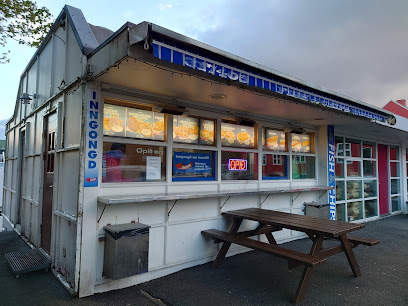
Kafe Umami
Discover Kafe Umami in Tórshavn - where local flavors meet global cuisine in a cozy atmosphere.
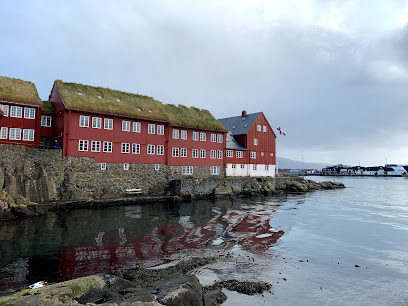
Suppugarðurin
Discover Suppugarðurin: Tórshavn's premier destination for authentic ramen and Japanese cuisine amidst stunning Faroese landscapes.

OY Brewing
Discover local craft beers at OY Brewing in Tórshavn—where tradition meets innovation in every glass.
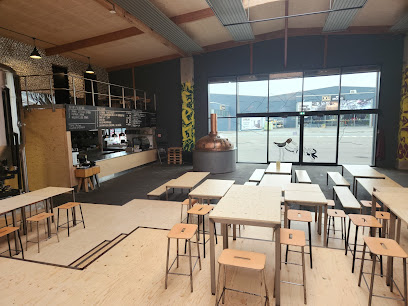
HAPS Burgerbar
Experience delectable gourmet burgers at HAPS Burgerbar in Tórshavn - where local ingredients meet flavorful creativity.

hvonn
Discover exquisite Faroese cuisine at Hvonn in Tórshavn – where fresh ingredients meet warm hospitality.

Hotel Runavik
Discover comfort and authentic Faroese flavors at Hotel Runavik in beautiful Runavik - your gateway to exploring stunning landscapes.

Smiðjan
Experience authentic Faroese cuisine at Smiðjan, where local ingredients meet traditional flavors in a cozy atmosphere.
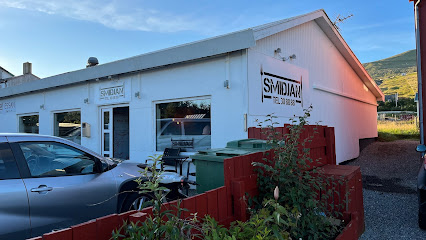
ROKS
Discover ROKS in Tórshavn for an exceptional dining experience featuring innovative Faroese cuisine made with locally sourced ingredients.
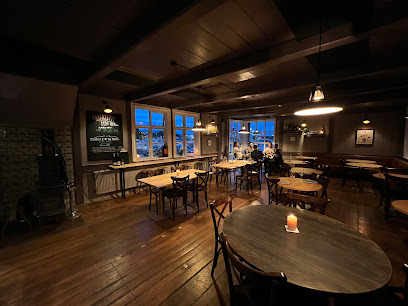
Skeiva pakkhús
Experience authentic Faroese cuisine at Skeiva Pakkhús in Tórshavn - where tradition meets taste.

Caféin á Mølini
Experience authentic Faroese cuisine at Caféin á Mølini in Skálavík – where local flavors meet stunning island views.
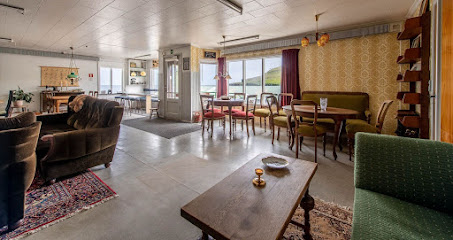
Markets, malls and hidden boutiques
H. N. Jacobsens Bókahandil
Explore H. N. Jacobsens Bókahandil in Tórshavn, where books, toys, and unique Faroese souvenirs await you in a charming gift shop.
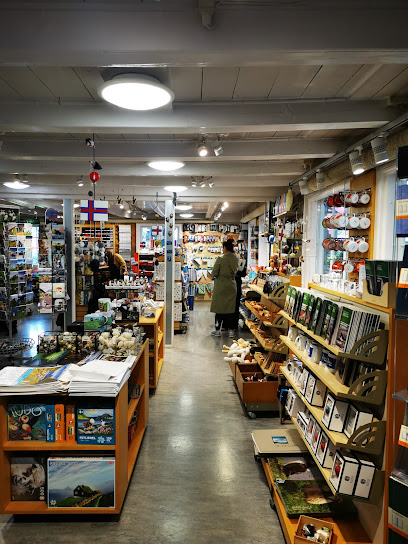
Bónus
Discover the local flavors and essentials at Bónus, the supermarket of choice in Tórshavn, Faroe Islands.

Guðrun & Guðrun
Explore Guðrun & Guðrun in Tórshavn for sustainable fashion that embodies Faroese culture and craftsmanship.
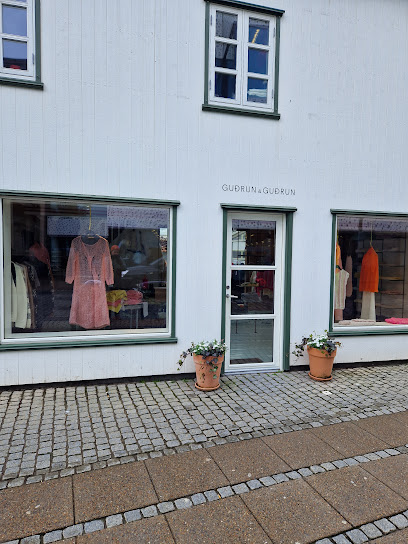
Vøruhúsið
Explore Vøruhúsið for exquisite furniture and home essentials, showcasing Faroese craftsmanship in a welcoming atmosphere.
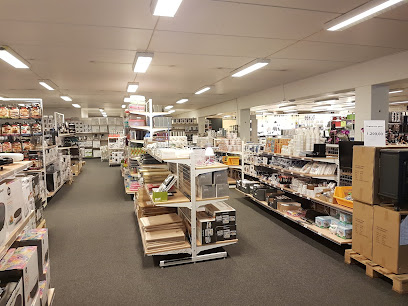
Á Sandoyggin
Discover the best of local flavors at Á Sandoyggin, your go-to grocery store in Skopun, Faroe Islands.
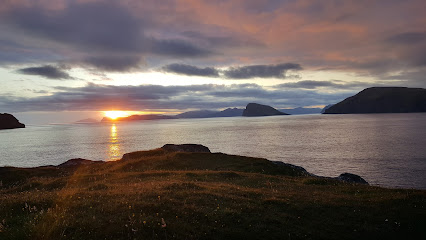
Ryggstein Sigarir
Explore Ryggstein Sigarir, Tórshavn’s premier cigar shop, offering a unique selection of premium cigars and a warm, welcoming atmosphere.
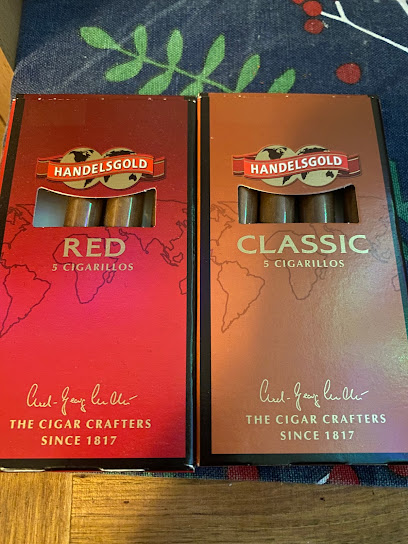
Ullvøruhúsið
Explore Ullvøruhúsið in Tórshavn for the finest Faroese wool clothing and accessories, a true representation of local craftsmanship and culture.

Føroya Heimavirkisfelag
Explore the authentic Faroese knitwear at Føroyas Heimavirkisfelag, a charming boutique in Tórshavn, perfect for unique souvenirs and local craftsmanship.

Fjord by Suffía Nón
Experience the charm of the Faroe Islands with unique gifts and local crafts at Fjord by Suffía Nón in Fuglafjørður.
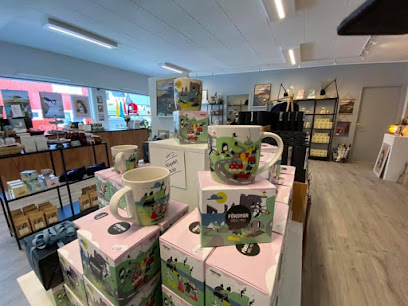
Eldhús
Discover the heart of Faroese culinary culture at Eldhús, a charming grocery store in Sandur offering local delicacies and fresh ingredients.

Rit & Rák
Explore the charm of Rit & Rák, Tórshavn's beloved book store, offering a rich selection of local and international literature in a cozy atmosphere.
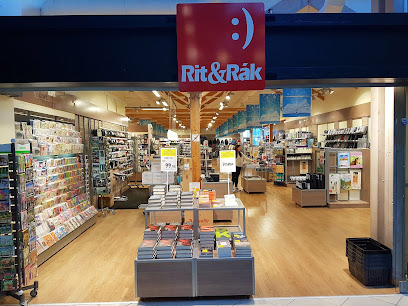
Tógvhúsið
Discover the vibrant world of yarn at Tógvhúsið, Tórshavn's premier destination for knitting enthusiasts and local crafts.

Glimmur
Explore Glimmer in Tórshavn for unique Faroese gifts and souvenirs that celebrate local culture and craftsmanship.
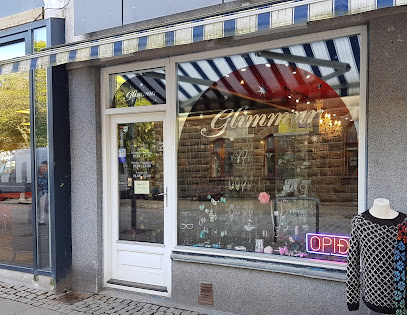
Blákrossbúðin
Explore Blákrossbúðin in Tórshavn for unique Faroese fashion and sustainable clothing, offering a blend of tradition and modern style.

Marjun Heimá
Explore the enchanting Marjun Heimá in Tórshavn, a hobby store where creativity flourishes and local craftsmanship comes alive.
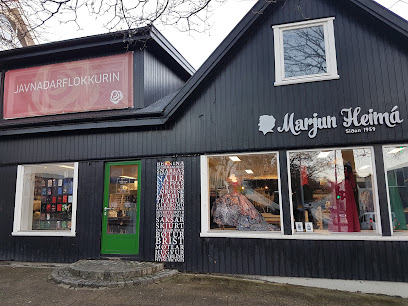
Essential bars & hidden hideouts
Irish Pub Torshavn
Discover the heart of Irish hospitality at Irish Pub Torshavn, where local flavors meet traditional Irish charm in the stunning Faroe Islands.
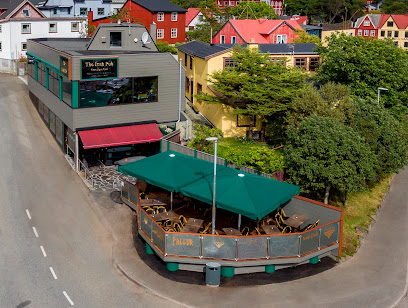
Sirkus Bar
Experience the vibrant nightlife at Sirkus Bar, Tórshavn's favorite spot for cocktails, live music, and socializing in the heart of the Faroe Islands.
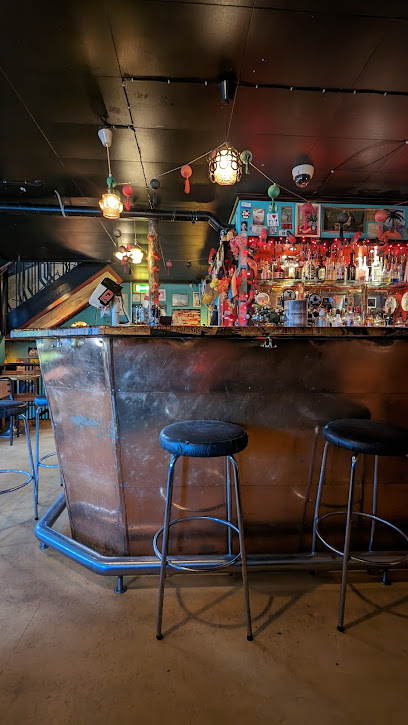
Mikkeller Tórshavn
Discover Mikkeller Tórshavn: A Cozy Bar in the Heart of the Faroe Islands Offering Craft Beers and Light Bites for an Unforgettable Experience.
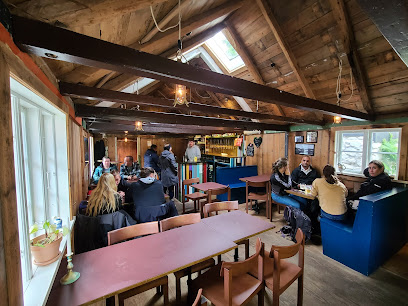
OY Brewing
Discover OY Brewing in Tórshavn, where craft beer meets delicious bar food in a cozy and inviting brewpub atmosphere.

Caféin á Mølini
Discover the flavors of the Faroe Islands at Caféin á Mølini, a cozy brasserie and guest house in Skálavík, where tradition meets modern cuisine.
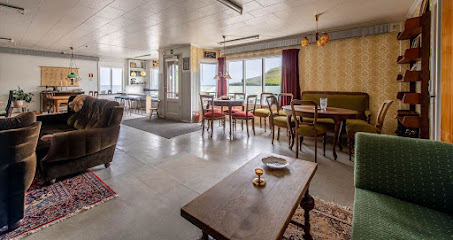
Roykstovan
Discover the vibrant nightlife at Roykstovan, Klaksvík's premier bar, offering a lively atmosphere and an impressive drink selection for all visitors.
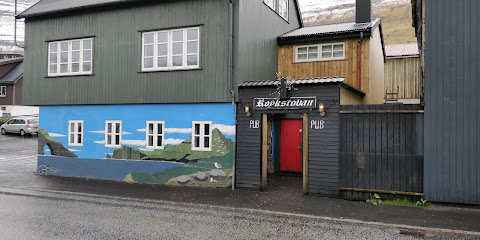
Glitnir
Discover Glitnir, the vibrant bar in Tórshavn offering local drinks, live music, and a cozy atmosphere perfect for unwinding.

Blábar
Experience the vibrant nightlife at Blábar, Tórshavn's go-to bar for jazz, blues, and a delightful selection of drinks.

Tórshøll
Discover Tórshøll in Tórshavn – a cozy bar offering a delightful selection of drinks and a warm atmosphere to unwind after exploring the Faroe Islands.
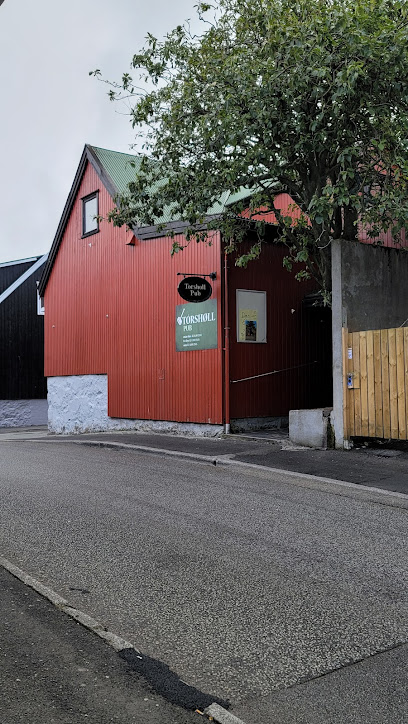
Maverick
Experience the lively Maverick Bar in Klaksvík, where locals and tourists gather to enjoy authentic Faroese beers and vibrant atmosphere.
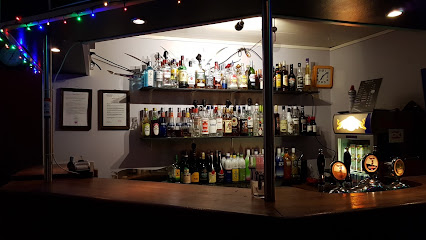
Landskrona Sports Bar
Landskrona Sports Bar: Your ultimate destination for sports, drinks, and good times in Tórshavn.
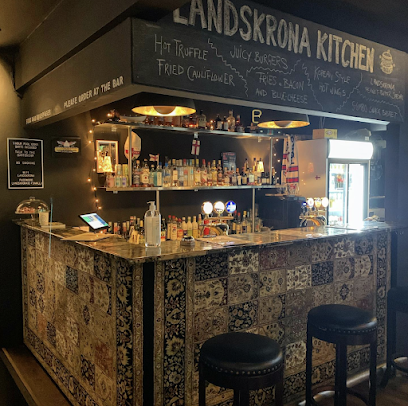
Bjórkovin, the Beer Hub
Discover the finest selection of beers at Bjórkovin, Tórshavn's beloved bar, where craft brews and cozy ambiance meet Faroese culture.
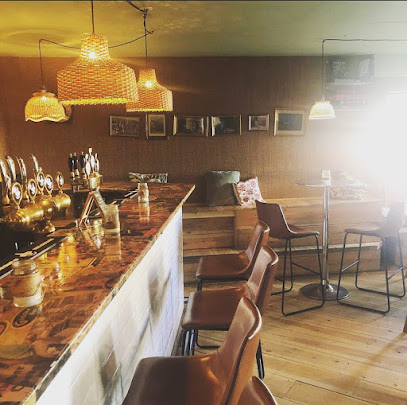
Tvøroyrar Klubbi
Discover the heart of nightlife in Tvøroyri at Tvøroyrar Klubbi, where local culture and vibrant energy come together.

Mass & Mia
Discover the inviting Mass & Mia bar in Tórshavn, where local flavors and a cozy atmosphere await every visitor.

Molly’s
Experience Faroese hospitality at Molly's, a cozy bar in Klaksvík perfect for drinks and local camaraderie amidst stunning island views.

Local Phrases about Húsavík
-
- HelloHalló
[HAH-loh] - GoodbyeFarvæl
[FAHR-vayl] - YesJa
[yah] - NoNei
[nay] - Please/You're welcomeVærsgo
[VAIR-sko] - Thank youTakk fyri
[tahk FEER-ee] - Excuse me/SorryFyrirgev
[FEER-ir-gev] - How are you?Hvussu hevur tú tað?
[HVOOS-soo HEH-vur toh tah?] - Fine. And you?Gott. Og tú?
[goht. oh toh?] - Do you speak English?Talar tú enskt?
[TAH-lahr toh ENSKT?] - I don't understandEg skilji ikki
[ay skil-yi IK-ki]
- HelloHalló
-
- I'd like to see the menu, pleaseEg vil síggja matseðilin, takk
[ay vil SEE-yah maht-SAY-dil-in, tahk] - I don't eat meatEg eti ikki kjøt
[ay EH-tee IK-ki chyut] - Cheers!Skál!
[skowl] - I would like to pay, pleaseEg vil gjalda, takk
[ay vil YAL-da, tahk]
- I'd like to see the menu, pleaseEg vil síggja matseðilin, takk
-
- Help!Hjálp!
[HYAULP] - Go away!Far burtur!
[FAHR BOOR-toor] - Call the Police!Róður til lógmann
[ROH-thoor til LOHG-mahn] - Call a doctor!Róður eftir læknari
[ROH-thoor EF-teer LAYK-nah-ree] - I'm lostEg er týstur
[ay air TEES-toor] - I'm illEg er sjúkur
[ay air SHOO-koor]
- Help!Hjálp!
-
- I'd like to buy...Eg vil keypa...
[ay vil KEH-pa] - I'm just lookingEg leita bara
[ay LAY-tah BA-ra] - How much is it?Hvat kostar tað?
[kvat KOS-tahr tah?] - That's too expensiveTað er ov dyrt
[tahr air ohv deert] - Can you lower the price?Kanstu sætta prísin?
[KAN-stoo SAI-tah PRIS-in]
- I'd like to buy...Eg vil keypa...
-
- What time is it?Hvat er klukkan?
[kvat air KLOO-kan] - It's one o'clockTað er eitt
[tah air ayht] - Half past (10)Hálvgilt (10)
[HOWL-vyilt (10)] - MorningMorgun
[MORE-gun] - AfternoonSíðdegi
[SEETH-deh-yi] - EveningKvøld
[KWULD] - YesterdayÍgår
[EE-gowr] - TodayÍ dag
[EE dah] - TomorrowÍ morgin
[EE MOR-gin] - 1Ein
[ayn] - 2Tvey
[tvay] - 3Tríggir
[TREEG-eer] - 4Fýra
[FEER-ah] - 5Fimm
[feem] - 6Seks
[seks] - 7Seyður
[SAY-thoor] - 8Átta
[OWT-tah] - 9Ni
[nee] - 10Tíggju
[TEE-dyoo]
- What time is it?Hvat er klukkan?
-
- Where's a/the...?Har er ein/tey...?
[har air ayn/tay...?] - What's the address?Hvat er adressan?
[kvat air ah-DRES-san] - Can you show me (on the map)?Kanstu vísa meg (á korti)?
[KAN-stoo VEE-sa may (ow KOR-tee)?] - When's the next (bus)?Hvussu seint kemur næsti (buss)?
[HVOO-soo sainht KEH-moor NIGH-stee (boos)?] - A ticket (to ....)Eitt miða (til ....)
[ayt MEE-dah (til ....)]
- Where's a/the...?Har er ein/tey...?
History of Húsavík
-
Húsavík, located on the Faroe Islands, has a rich history of early settlements dating back to the Viking Age. The first settlers arrived around the 9th century, drawn by the fertile fishing grounds and the natural harbor. Archaeological evidence suggests that these early inhabitants were primarily engaged in fishing, farming, and trading.
-
During the medieval period, Húsavík grew as a small but significant community. The village was part of the broader Norse culture that dominated the North Atlantic. This era saw the construction of wooden stave churches and the establishment of local governance structures. The village also played a role in the regional trade networks, with goods such as dried fish, wool, and whale products being exchanged.
-
In the 14th and 15th centuries, the Faroe Islands, including Húsavík, came under the influence of the Hanseatic League. The League's dominance in Northern European trade brought economic opportunities and challenges. Húsavík's harbor became a key point for the export of fish, which was a highly valued commodity in the Hanseatic markets. This period also saw an influx of foreign merchants and a blend of cultural influences.
-
The Faroe Islands, including Húsavík, were part of the Danish-Norwegian union from the late 14th century until the early 19th century. This union brought administrative changes and introduced Lutheranism as the dominant religion. The shift from Catholicism to Protestantism had a profound impact on the cultural and religious practices in Húsavík. The village's church records from this period provide valuable insights into the community's life and transformations.
-
The 19th century was a period of significant transformation for Húsavík. The advent of modern fishing techniques and the establishment of fish processing facilities revolutionized the local economy. The village expanded, with new buildings and infrastructure supporting the growing population. Improved transportation links, including steamships, connected Húsavík more closely with the rest of the Faroe Islands and beyond.
-
World War II had a profound impact on Húsavík, as it did on the entire Faroe Islands. The islands were occupied by British forces to prevent a German invasion, which brought about changes in the local economy and daily life. After the war, Húsavík, like other Faroese communities, benefited from post-war reconstruction efforts. The village saw improvements in infrastructure, including roads, schools, and healthcare facilities.
-
Today, Húsavík is a vibrant community that balances its rich historical heritage with modern developments. Tourism has become an important part of the local economy, with visitors drawn to its picturesque landscapes, traditional Faroese architecture, and historical sites. The village continues to celebrate its maritime heritage through festivals and cultural events, ensuring that the legacy of Húsavík's past remains an integral part of its present.
Húsavík Essentials
-
Húsavík is located on the island of Sandoy in the Faroe Islands. To reach Húsavík, you can fly into Vágar Airport, the only international airport in the Faroe Islands. From there, you can take a domestic flight to Sandoy's Skopun Airport or opt for a ferry service from Tórshavn to Sandoy. The ferry ride takes approximately 1 hour. Once on Sandoy, Húsavík is accessible by car or local bus services.
-
Within Húsavík, transportation options include walking, cycling, and local bus services. The town is small and many attractions are within walking distance. For exploring the wider region of Sandoy, renting a car is a convenient option. Taxis are also available but may be limited, so it's advisable to book in advance.
-
The official currency in the Faroe Islands is the Faroese króna (DKK). Credit and debit cards are widely accepted in Húsavík, including in restaurants, shops, and hotels. However, it is recommended to carry some cash for smaller establishments and local markets. ATMs are available in the town for cash withdrawals.
-
Húsavík is generally very safe for tourists. Crime rates are low, and the local community is welcoming and friendly. Standard safety precautions should still be observed, such as keeping an eye on personal belongings and not leaving valuables unattended in public places. There are no specific high-crime areas targeting tourists.
-
In case of an emergency, dial 112 for immediate assistance. This number connects you to emergency services, including police, fire department, and medical services. Húsavík has a local medical clinic, and more comprehensive medical facilities are available in Tórshavn. It is advisable to have travel insurance that covers medical emergencies and evacuation.
-
Fashion: Do dress in layers and wear waterproof clothing, as the weather can be unpredictable. Avoid overly casual attire in finer dining establishments. Religion: Do respect local religious customs, including being quiet and respectful in churches. Public Transport: Do be punctual, as buses run on strict schedules. Don't play loud music or disturb other passengers. Greetings: Do greet people with a friendly 'hæ' (hello) or 'góðan dag' (good day). A firm handshake is common. Eating & Drinking: Do try local Faroese dishes and delicacies. Don't refuse offers of food or drink, as it may be considered impolite.
-
To experience Húsavík like a local, visit the local fish market where fresh catches of the day are sold. Engage with locals at the community center, where you can learn about traditional Faroese knitting and crafts. Don't miss the opportunity to participate in local festivals and events, which offer a deep insight into the culture and traditions of the Faroe Islands. For a unique experience, take a guided boat tour to explore the stunning coastal landscapes and birdlife around Húsavík.
Trending Landmarks in Húsavík
-
Kirkjubømúrurin
-
Gjógv Natural Harbour
-
The Nordic House
-
Fossá
-
Skansin
-
The Seal Woman (Kópakonan)
-
The National Gallery of The Faroe Islands
-
Tjóðsavnið (Faroe Islands National Museum)
-
Kallur Lighthouse
-
Dúvugarðar Museum & Café
-
Slave Cliff (Lake Above the Ocean)
-
Klakkur
-
Witches Finger Trail
-
Vesturkirkjan
-
Hvannhagi
Nearby Cities to Húsavík
-
Things To Do in Argir
-
Things To Do in Tórshavn
-
Things To Do in Tvøroyri
-
Things To Do in Runavík
-
Things To Do in Strendur
-
Things To Do in Sandavágur
-
Things To Do in Miðvágur
-
Things To Do in Vágur
-
Things To Do in Kvívík
-
Things To Do in Gøta
-
Things To Do in Sorvagur
-
Things To Do in Hvalvík
-
Things To Do in Vestmanna
-
Things To Do in Klaksvik
-
Things To Do in Inverness

